We love Sunnyside Environmental School in gorgeous, inner Southeast Portland, Oregon! We’ve been visiting Jeremy Thomas and Asa Gervich’s 4th grade classes there for several years.
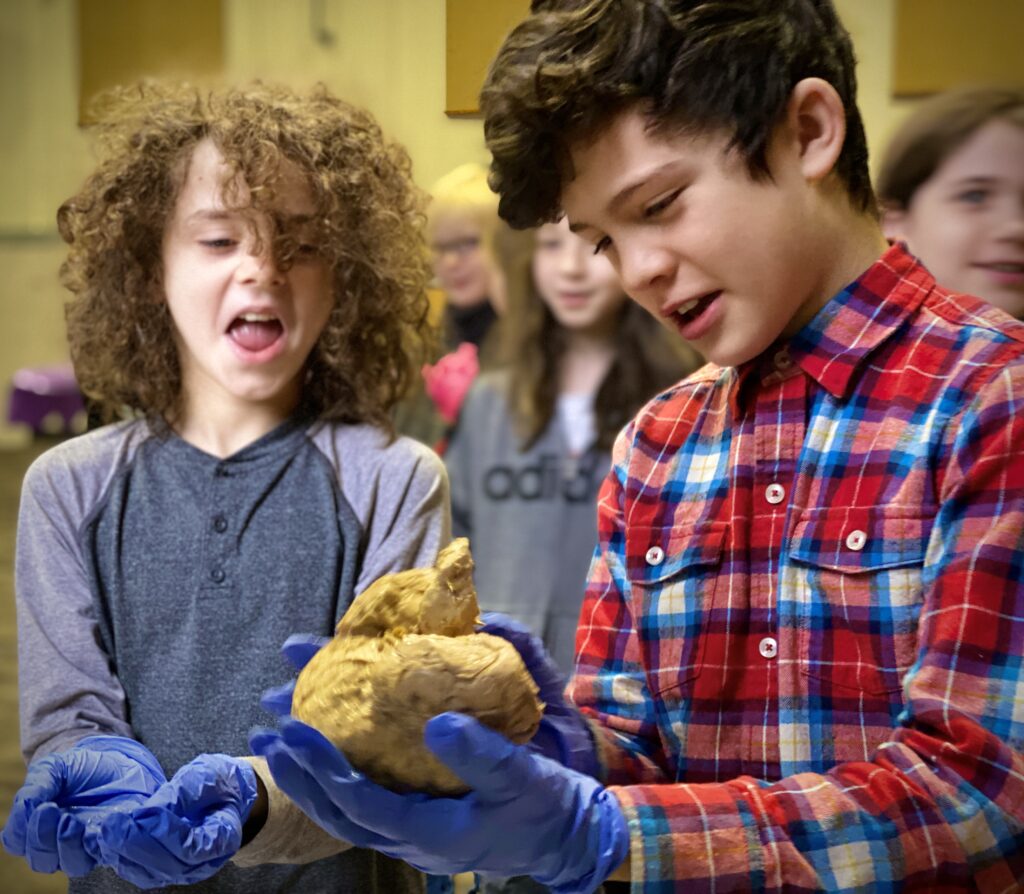
LEARN MORE: How to visit public schools
LEARN MORE: Thank You Northwest Noggin!
LEARN MORE: A crayon in Homer’s brain
LEARN MORE: What about the glia?
We’ve crafted brain cells from pipe cleaners, of course but also – during Portland Public Schools pandemic-era remote classrooms – we quarried our neurons in Minecraft and created still more out of marker pens, shoes, asparagus, soda cans, popcorn and coins!
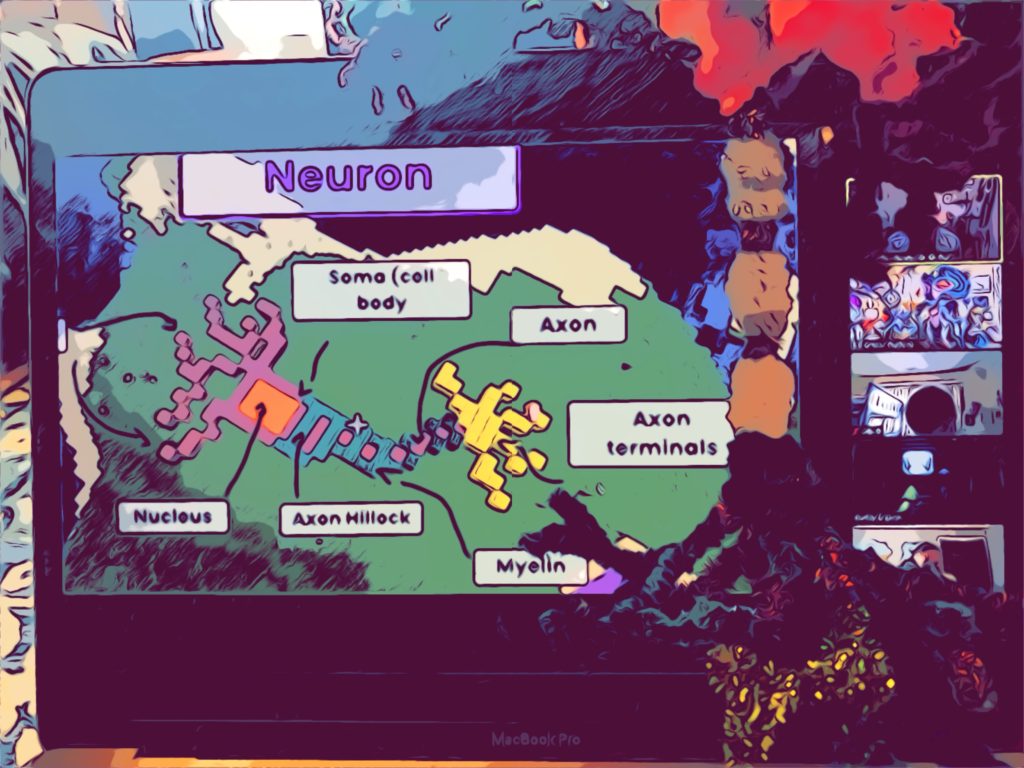
LEARN MORE: Neurons in Minecraft & More!
LEARN MORE: Make a Pipe Cleaner Neuron or Glial Cell
LEARN MORE: Make a Found Object Brain Cell

In January we returned in person to the spacious Sunnyside gymnasium, along with some accomplished outreach volunteers from Portland State University, including Kai Hosea, Julian Rodriguez, Isabella Starr, Kristin Preston, Asha Powell-Stormberg, Kaya Burd, Allonté Barakat, Marc Chenard, Roman Cimkovich, Jadyn Harris and Martin Harris, and Dr. Denesa Lockwood from OHSU.
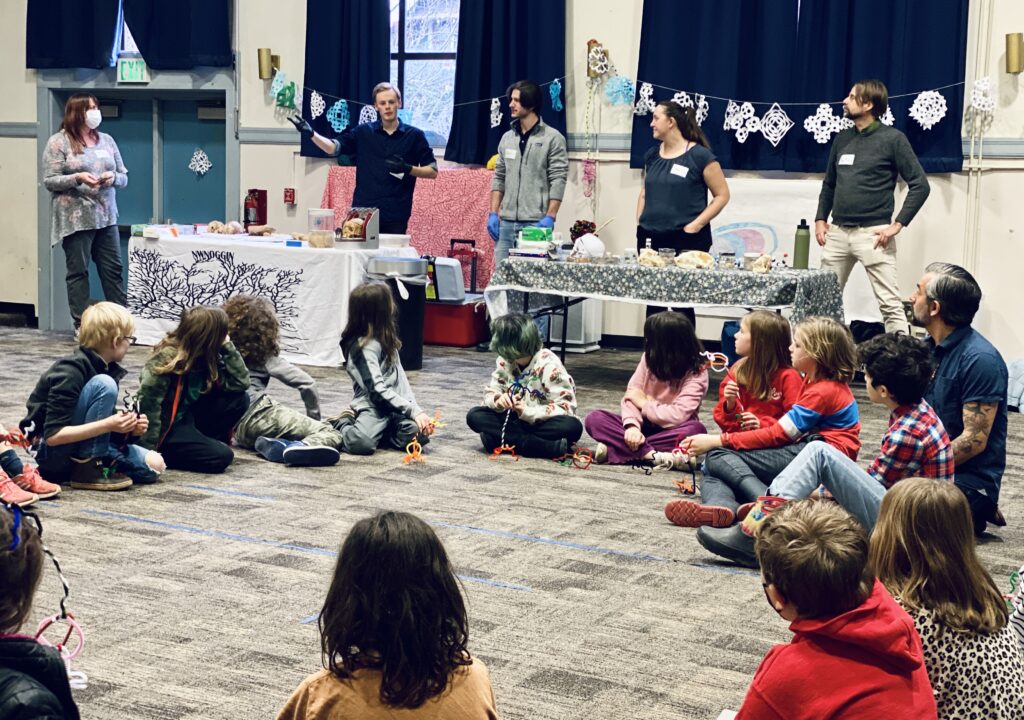
Allonté created a podcast from the experience! LISTEN HERE:
LEARN MORE: A neurosymphony of skills!


Brains and Skills: Learning from Mistakes!

Brains are constantly changing, depending on what you do, and what happens to you when you do it.

Your brain is a mass of interconnected wires, made up of cells that let you see, hear, feel, think and move. When you’re born you have about 200 billion brain cells called neurons, and another 200 billion cells called glia, that reach out worm-like projections and form connections – known as synapses – with each other. This process is ACTIVE, takes energy (food and air) and requires light, sound, touch, muscle movements and other forms of experience.
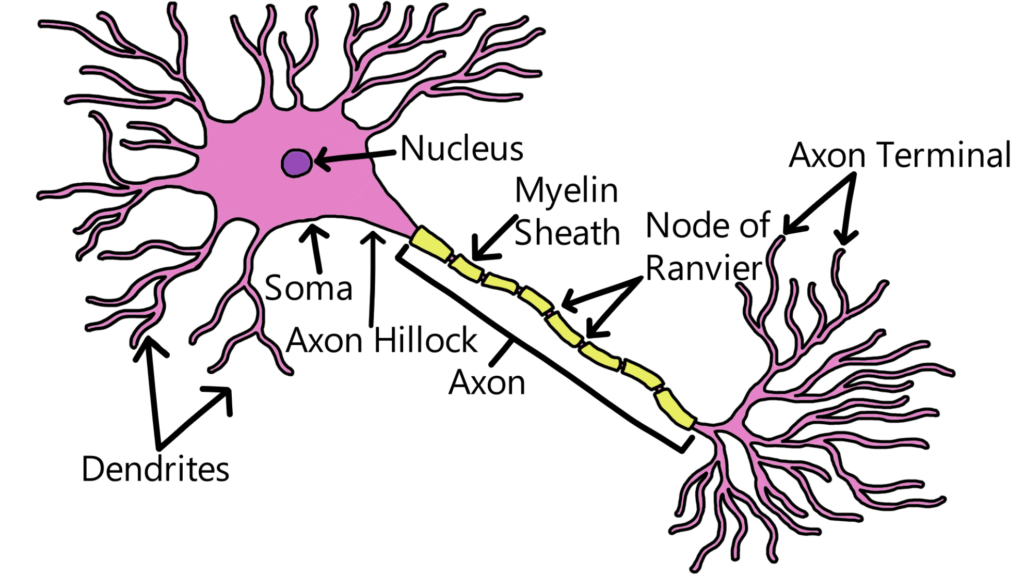

It also kills a lot of cells! In fact, by the time you’re done with high school, you’ll have only HALF as many neurons and glia left in your brain! But the ones that remain will be wired up into adult networks that properly route information from your eyes, ears and body to your brain for perception, cognition, and decision making – and from your brain out to your muscles to let you move well and act.
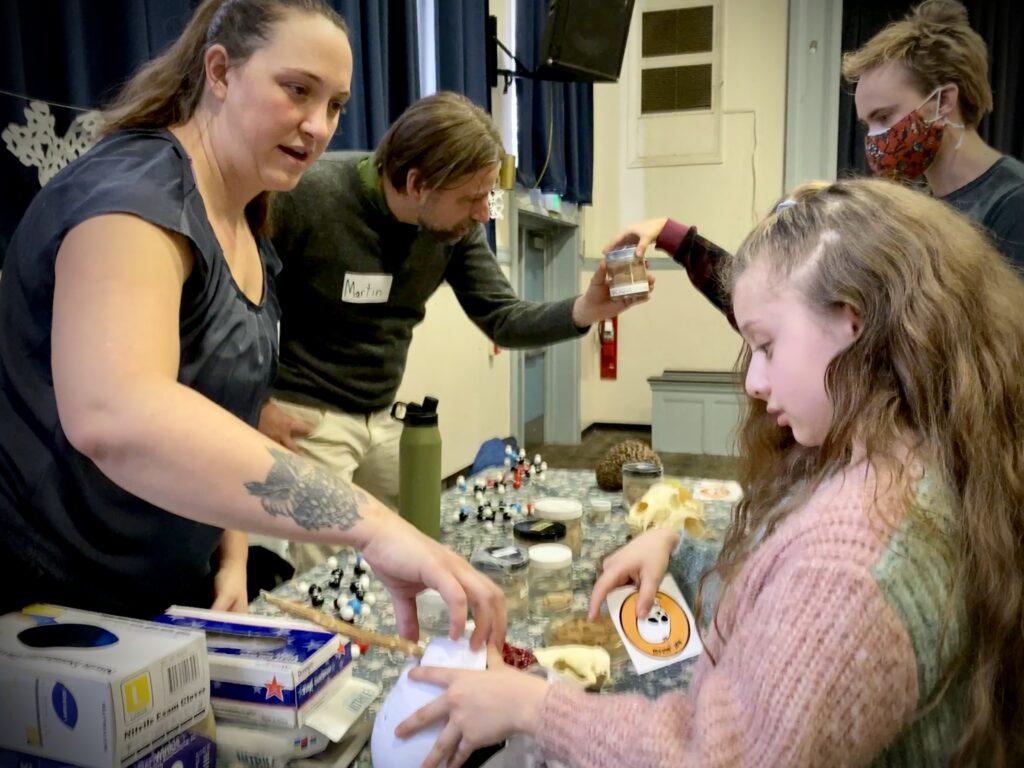
LEARN MORE: Imaging structural and functional brain development in early childhood
Sometimes – like when you’re learning something new – you have to think hard about how you’ll move, and you’ll naturally make a lot of errors. But each error, each mistake, is important feedback for your neurons and glia, which respond by physically changing how they connect. Your brain’s wiring changes, you get more skilled, and you’ll require less hard thinking and effort to play the guitar, make a basket, give a speech, ride a bicycle – or play the drums!

There is a LOT of research implicating involvement of the cerebellum – our “little brain” – in what we do implicitly; that is, automatically and with ease and skill.


And other deep areas of our brains, including the basal ganglia (a set of subcortical, “below the cortex” nuclei) – along with the cerebellum – also let us carry out these skilled, implicit, “feel the force” type behaviors.
LEARN MORE: It’s Just Like Riding a Bike…Except It’s Not!
LEARN MORE: The cerebellum: Learning movement, language, social skills
LEARN MORE: Mini-review: The Role of the Cerebellum in Visuomotor Adaptation
LEARN MORE: Neural Correlates of Motor Learning, Transfer of Learning, and Learning to Learn
LEARN MORE: The basal ganglia control the detailed kinematics of learned motor skills
LEARN MORE: A Critical Review of Habit Learning and the Basal Ganglia
LEARN MORE: The Striatum: Where Skills and Habits Meet
What skills are you improving?

We asked students – many still in awe at their teacher’s formerly secret drumming skills! – to consider what abilities that they already had or were developing, and to consider what it takes to re-wire their own frontal lobes, cerebellar and subcortical networks to make this happen (HINT: it takes practice, practice, practice – and learning from mistakes :).
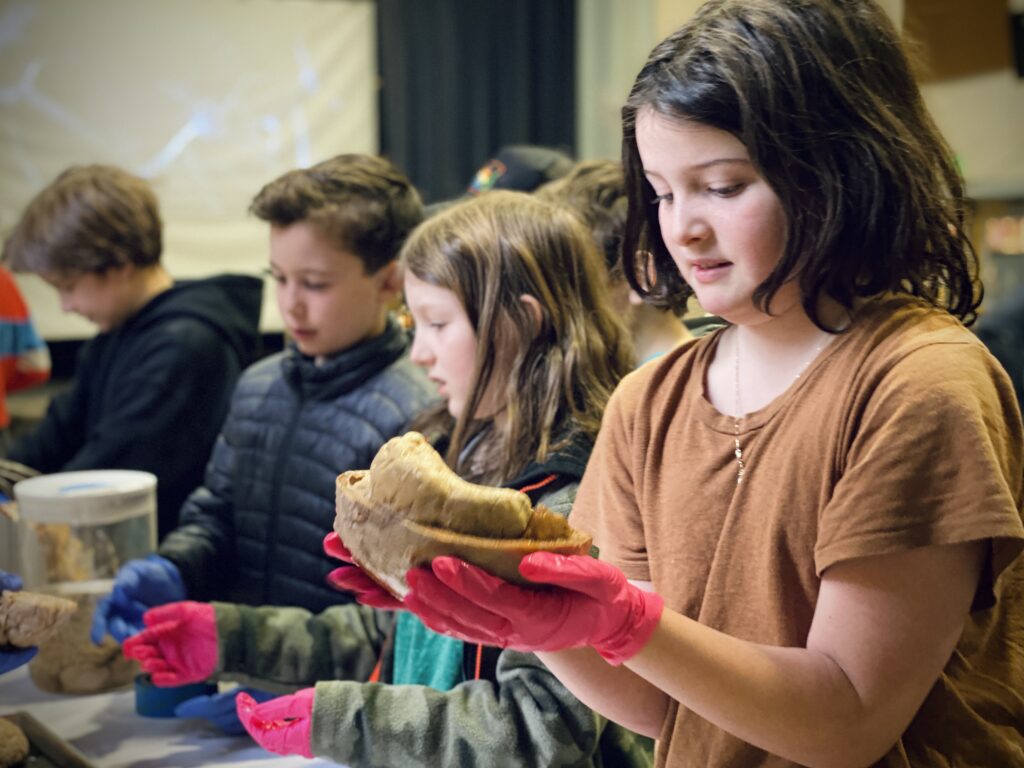
Students took pens and crayons to draw what they’re good at, from video games to soccer, dancing, roller blading, art, drumming, guitar, caring for pets and writing books (!) on craft paper.


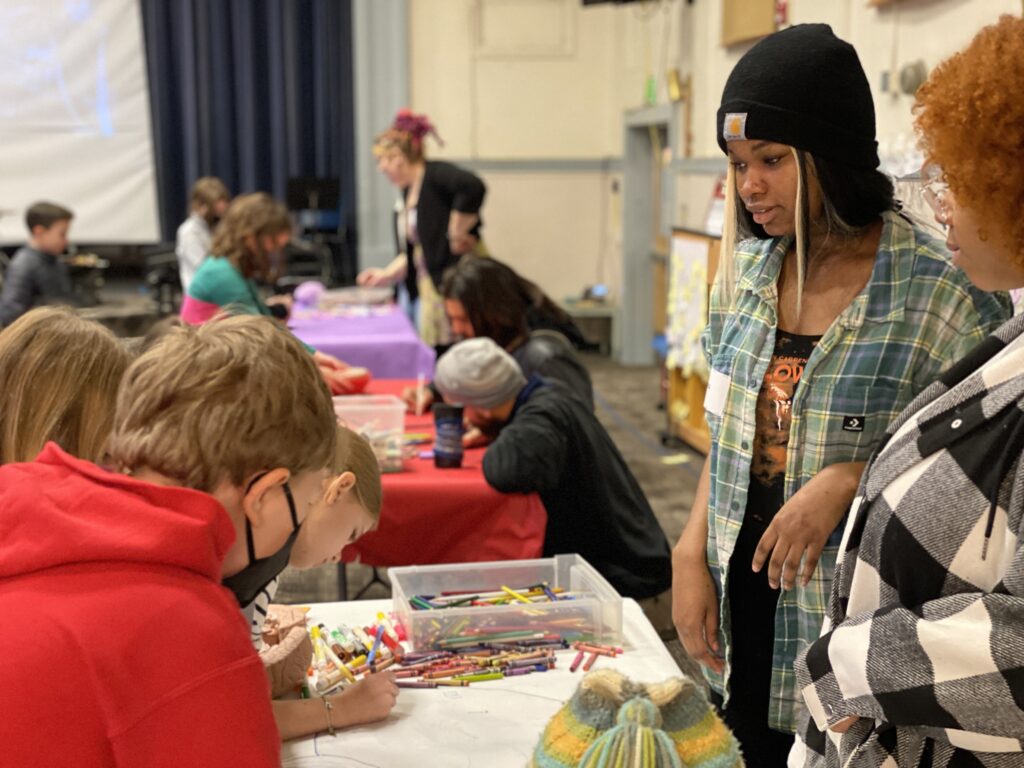
They also wrote what they’re good at on brightly colored post-it notes that Noggin volunteers affixed to a drawing of the human brain, created by artist Jeff Leake!


Can you see a pattern?
From Asa Gervich, 4th Grade Teacher
“Once again, we had an awesome and curiosity-inspiring visit from NW Noggin with our 4th graders. The kids love meeting and interacting with all of the undergraduate and graduate students, asking them questions, and hearing about all of the different avenues of research and study in the worlds of psychology and neuroscience.”
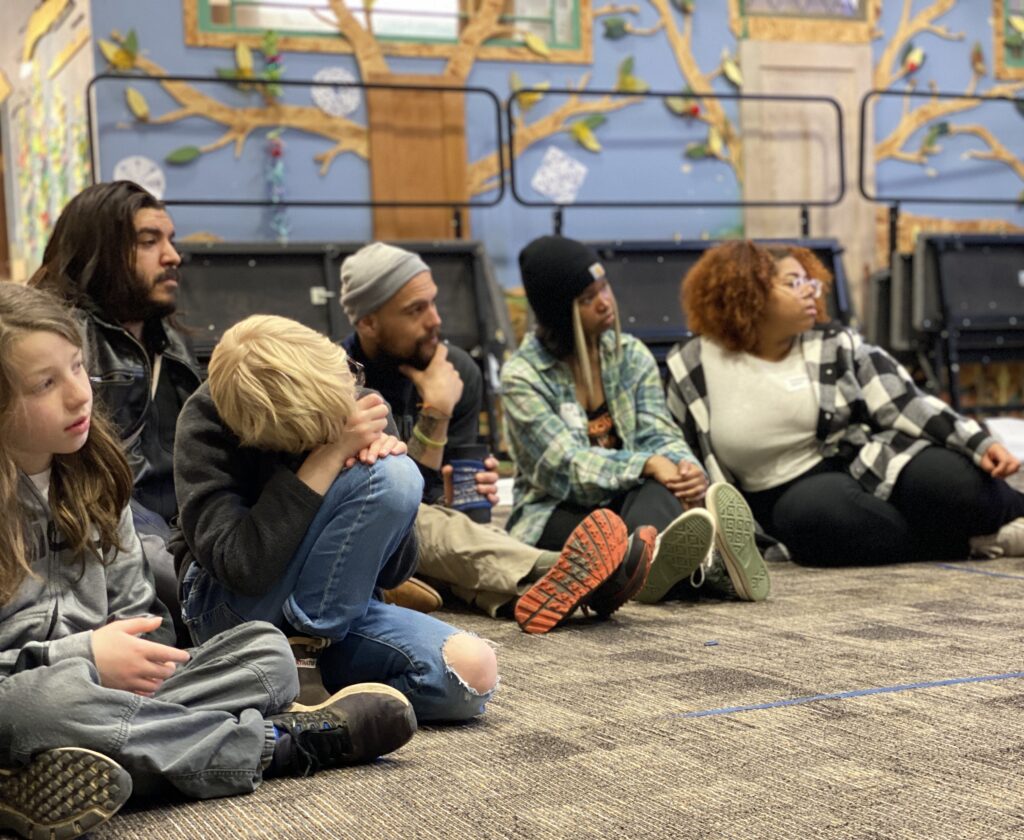
“For a lot of fourth graders, I think these interactions with the older students make quite an impression – it helps the kids see themselves as potential college or graduate students someday, possibly in similar fields.“
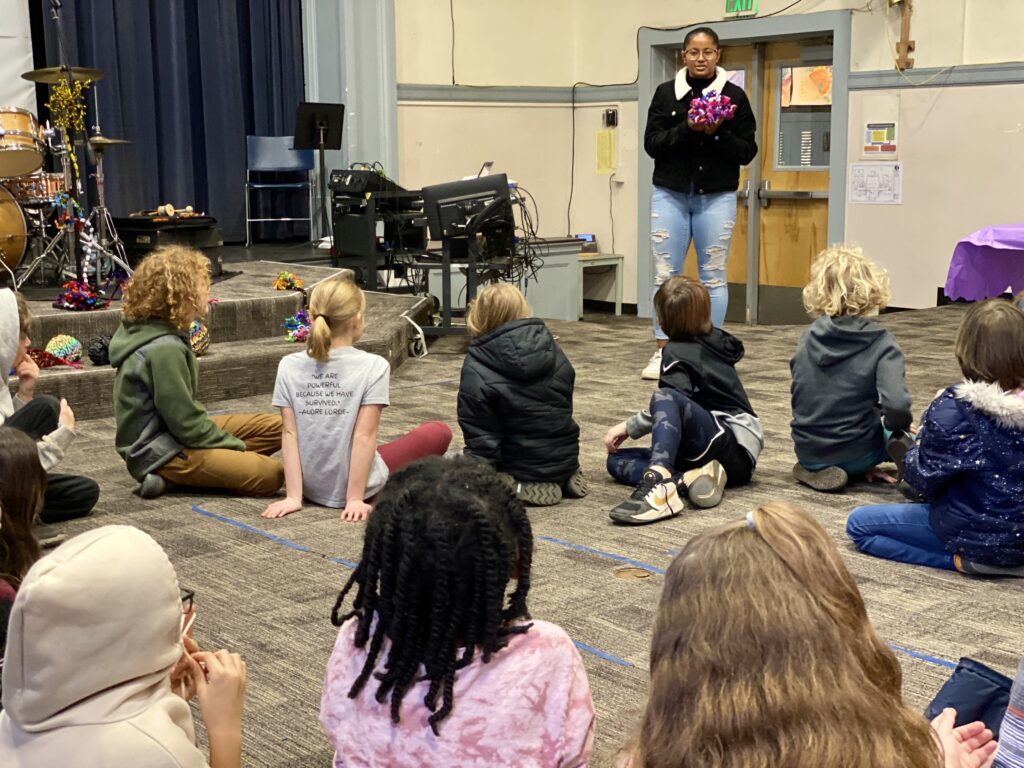

“Students were awestruck to touch or hold real brain specimens, loved drawing representations of their myriad skills and talents onto the giant brain illustration, and enjoyed the surprise of hearing yours truly play a little drum solo.”
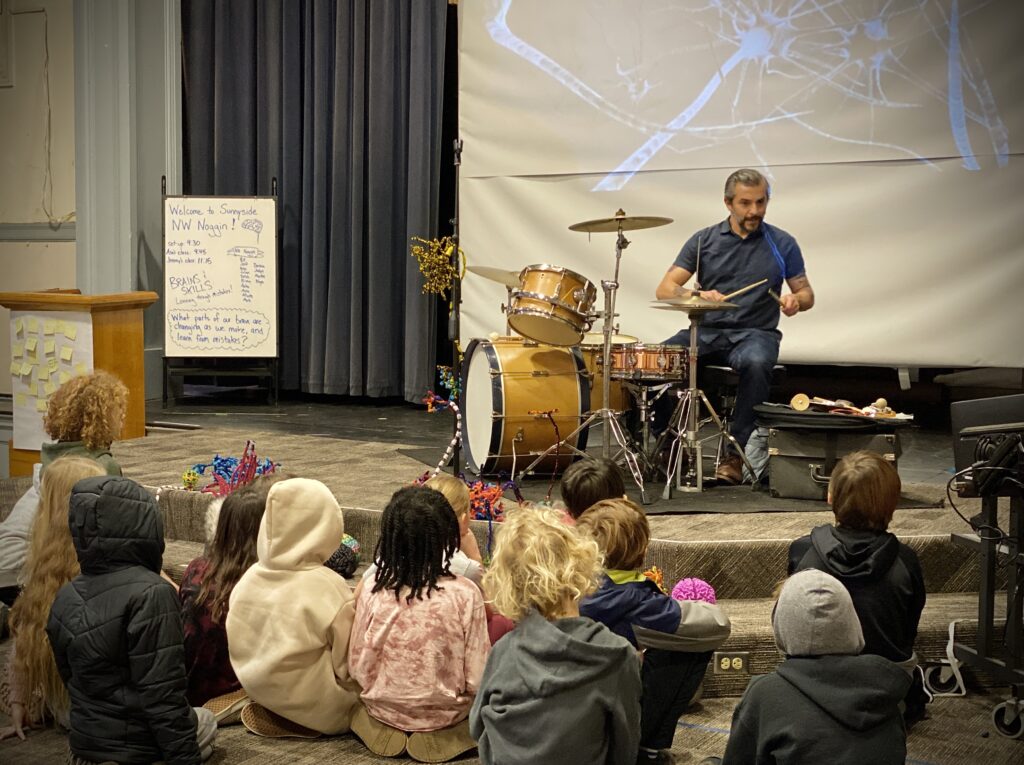
“I really enjoyed this part, too – and sharing my own journey with mistake-making and neuroplasticity when it comes to music-making and improvisation. It really got me thinking too, about improvisation in music, how the realm of play and awakening creativity is about being true to ourselves and our visions, and at turns both embracing and learning from mistake-making! I learned how the basal ganglia play a role in a drummer coordinating moving various limbs in rhythm, independently!”

“Can’t wait for the next NW Noggin visit – always a learning experience.“
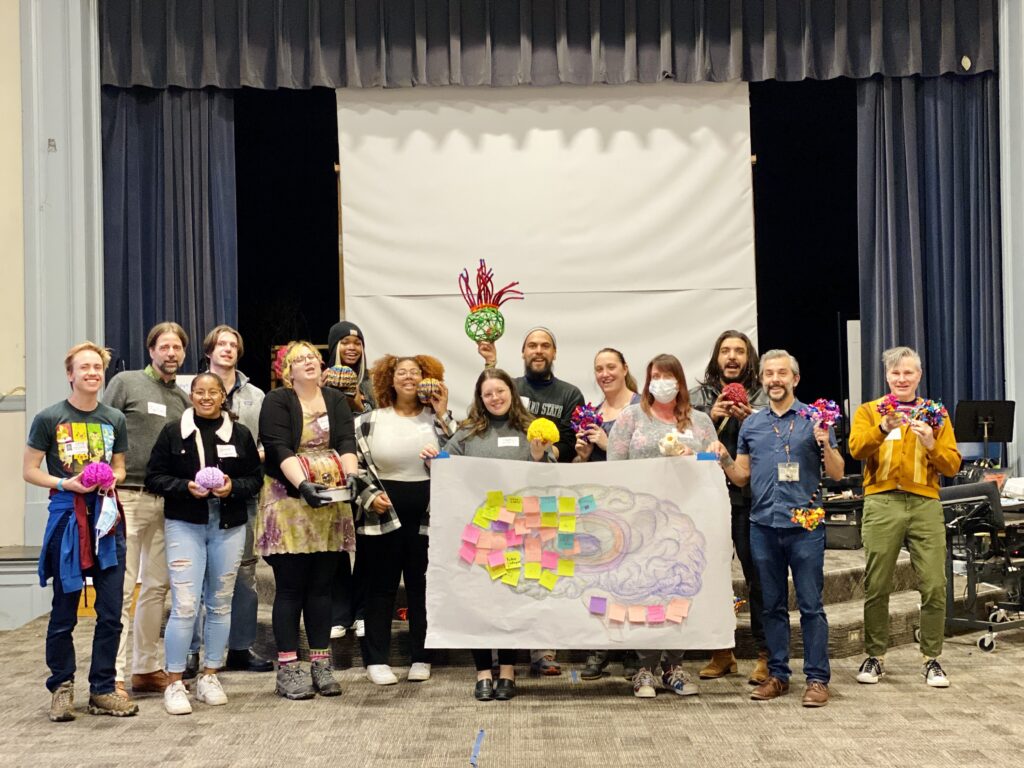
Huge thanks to our skilled and enthusiastic outreach volunteers, and to the students, teachers and staff at Sunnyside School! STAY TUNED: Posts (and podcasts!) coming soon!


